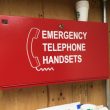Solving E911 location accuracy
There has been perhaps no better industry success story in the U.S. than the wireless industry. According to the Cellular Telecommunications and Internet Association, there are now 255 million wireless subscribers nationwide. That number is astounding.
The percentage of homes that still subscribe to landline telephone service is dropping faster than President Bush’s popularity rating. A report commissioned by the Centers for Disease Control indicates that 15.7% of households had only mobile phones in the second half of last year.
More important are the trends described in the report. For instance, nearly 31% of 18- to 24-year-olds live in households with only wireless telephones. Wireless is truly the future of personal communications. The wireless industry’s rewards for this success are record profits and growing popularity. But with this success also comes increased responsibility. As wireless becomes the primary method of communication, consumers reasonably expect — regardless of their location — to be able to rely on their wireless phone as much as possible for the purposes that they previously relied on their landline telephone. This includes 911, and that is not up for debate.
Wireless consumers must have the best possible 911 service that can be provided by their wireless carrier. At the same time, consumers and the public safety community cannot demand that carriers do the impossible. Our expectations and demands must be reasonable. How to define reasonable wireless location accuracy rules is up for debate, and the public safety community and the wireless industry need to come together to resolve it.
Too much time and energy has been spent advocating divergent positions over the past several years. A renewed focus and energy is essential to come to an agreement on this issue so we can put 100% of our focus on actually improving the accuracy of wireless 911 calls, rather than focusing on our disagreements. NENA and APCO are more than ready to work with the wireless industry to resolve our differences on this issue. We trust the wireless industry feels the same way and will engage public safety with a can-do attitude focused on what can be done, not what can’t be done.
The public safety and consumer demand is simple. Wireless 911 calls must include automatic location information that is timely and sufficiently accurate to enable routing to the appropriate public safety answering point (PSAP). This need for critical, accurate information includes calls made from urban, suburban and rural areas, as well as from outdoor and indoor locations.
The location information provided must allow the dispatch of first responders to the scene of the emergency without wasting valuable time searching for the location.
At the request of the wireless industry, the U.S. Court of Appeals for the D.C. Circuit recently put the FCC’s current location accuracy rules on hold pending judicial review. Three outcomes are possible. The court could hear arguments and decide to uphold the rules. The court could hear arguments and decide the FCC needs to try again and remand the location accuracy order back to the commission. Or the commission could simply seek a voluntary remand of its rules and issue a new order. It is unclear what the final outcome will be. Regardless, it is essential that this issue continue to receive the attention it deserves. Public safety, the wireless industry and the FCC must not lose focus as other issues (such as the 700 MHz D block) receive more attention.
A 911 call can be the most important moment in a person’s life. Increasingly, the 911 call is being made on a wireless phone. The 911 call-taker needs to know where that call is located to provide the help the caller needs and expects. It’s time to roll up our sleeves and resolve this issue. Lives are depending on us.
Jason Barbour is the current president of NENA. He is the 911 director for Johnston County, N.C.

















